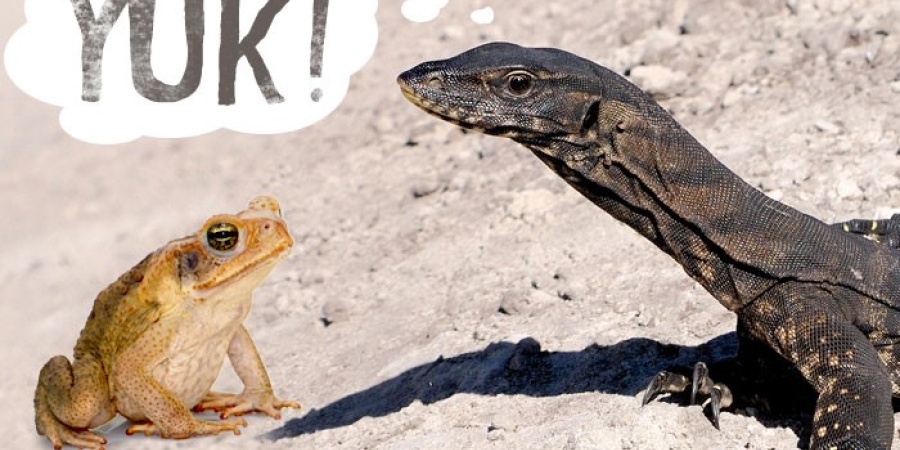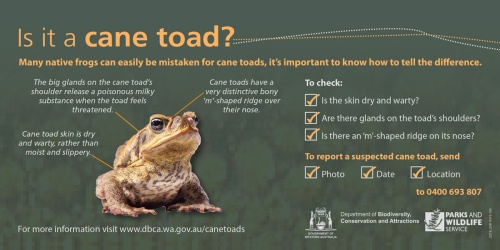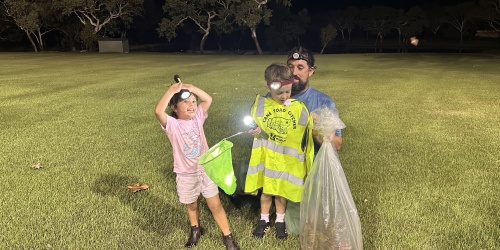
Despite significant investments across Australia in research and funding since 1986, landscape-scale or biological control methods to manage cane toads in Australia have so far been unsuccessful. To address the immediate risk of species decline in WA as cane toads continue to spread, DBCA prioritises conditioning native predators of frogs and toads to avoid predating on cane toads. This approach, known as conditioned taste aversion, is currently demonstrating positive outcomes by effectively deterring native species from consuming cane toads as they progress through WA.
Conditioned Taste Aversion
What is conditioned taste aversion and how does it help?
Conditioned taste aversion (CTA) is an approach where native species are exposed to either ‘toad-aversion’ baits or ‘teacher toads’. The ‘toad-aversion’ baits are sausage-like baits that contain a chemical that induces nausea without causing fatalities. ‘Teacher toads’ are young cane toads, which are poisonous but typically only cause nausea, without being fatal when eaten. The conditioned native animals are subsequently averse to the scent and taste of adult cane toads, reducing the likelihood of them preying on, and subsequently ingesting cane toads when they first arrive in an area. The baits are strategically placed ahead of the advancing toad invasion front.
Research has demonstrated that quolls that ingested a single toad-aversion sausage bait exhibited a notable decrease in their attraction to cane toads. These trained quolls displayed significantly shorter interaction times with the toads compared to their untrained counterparts.
How are priority species and areas identified for conditioned taste aversion efforts?
The management of cane toads poses significant challenges, primarily due to the vast and difficult-to-reach areas they have spread across. Faced with these challenges, DBCA focuses efforts on areas of high biodiversity to protect localised "enclaves” of vulnerable native predators. These enclaves serve as refuges where priority predator populations can persist. The presence of these priority predators plays a vital role in maintaining the natural ecological balance of food webs and ecosystems. Their importance lies in their ability to regulate native prey populations and ensure the stability of the overall ecological system. To protect the enclaves of native predators, baits are dropped by aircraft across these priority areas just ahead of the cane toad frontline.
Examples include:
- Prince Regent National Park, home to a variety of priority animals and important populations of northern quolls.
- Mitchell Plateau, Dambimangari Country, and Bunuba Country, home to a variety of priority animals including northern quolls, and goannas.
To generate the toad bait sausages, the participation of both toad musters and community cane toad collectors is essential in supporting conditioned taste aversion projects.





